Canadian GP: Do McLaren really look like 'amateurs'
- Published
- comments
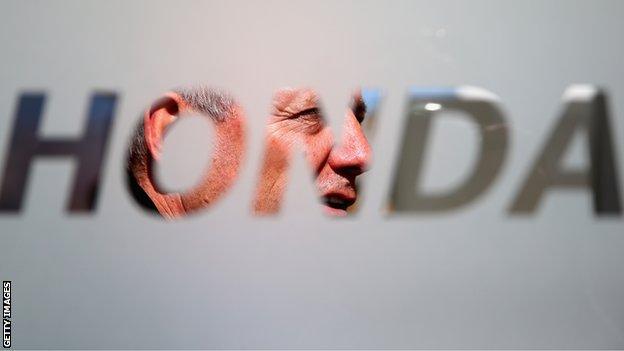
So far this season, McLaren have been reluctant to point the finger at partners Honda for the poor performance of the 2015 car
Fernando Alonso summed up in a radio message that lasted just a couple of seconds the full extent of a desperately difficult Canadian Grand Prix weekend for McLaren and their engine partner Honda.
The response from the double world champion, who earns £26m ($40m) a year, to a demand to save fuel while battling to hold on to 16th place against novice drivers from teams with a fraction of McLaren-Honda's budget, will doubtless be interpreted as a fit of frustration.
One that finally reveals the true thoughts of a man with a reputation as a notoriously difficult and demanding character, but who so far this season has been a picture of calm and patience.
But it was almost certainly a lot more subtle and multi-faceted than that.
"Sauber's Felipe Nasr is 7.5 seconds back," Alonso was told. "We must save fuel. We must target zero."
"I don't want, I don't want," came the reply. "Already I have big problems now, driving with this and looking like amateurs. So I'd like to race and then I will concentrate on the fuel."
It was the "amateurs" bit that really caught the attention, and which summed up the size of the challenge still facing Honda seven races into their much-heralded return to F1.
In one word, Alonso had encapsulated a race that had started with optimism for the Japanese company but which soon descended into embarrassment.
On Friday afternoon, Honda's F1 boss Yasuhisa Arai was talking about having a "very positive" feeling about the weekend, on which the Japanese company had used up two of its permitted nine in-season engine development tokens on changes aimed at improving the reliability and efficiency of its engine.
A few hours later, Honda discovered a problem with Alonso's engine that meant it needed to be changed before final practice on Saturday morning. Alonso had done one lap of that session when team-mate Jenson Button's engine stopped, stranding him out on the track and bringing the session to a premature end.
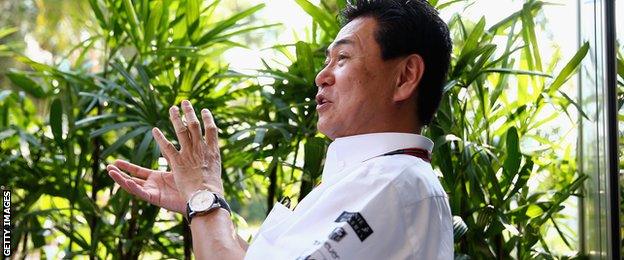
Honda's F1 boss Yasuhisa Arai was grilled by journalists about Honda's reliability
The new parts that were needed to make Button's car race-ready meant a start at the back of the grid and an immediate drive-through penalty.
Later on Saturday, Arai, who has so far been given a relatively easy ride by a media which well understands Honda's position, was subjected to his first major grilling. Sitting either side of him, Alonso and Button kept their heads down, their faces hidden by the peaks of their caps, as if to say: "We're not getting involved in this."
Twenty-four hours later, both cars had retired from the race with different exhaust-related problems, and Alonso's pointed message had betrayed Honda's difficulties to a global television audience.
But this was not a message born of frustration, or even emotion.
On one level, it was simply, as Alonso put it, "a disagreement on when to save fuel".
"When you are surrounded by cars trying to overtake you and you are in the middle of battles," he said, "fuel is a low priority. You will have time later on in the race to save fuel.
"So after three or four reminders of fuel-saving, I said: 'Let me race now and have some fun and later I will think about the fuel.'"
He may well also have been thinking that fuel-saving was academic, given Honda's reliability record in both Canada and over the previous races. If so, he was proved right.
More than that, though, this was almost certainly a message to Honda to start getting its act together, and fast.
When this was put to McLaren racing director Eric Boullier after Alonso had finished his media duties, he replied: "Ask him," before adding: "I guess it is very likely, yes."
Asked whether he was worried Alonso would "at some point go mad", Boullier said: "If we are still like this next year, I am sure he will turn mad. But I don't think he will.

Jenson Button's eighth-place finish in Monaco is McLaren's only points finish of the 2015 season
"You guys see him regularly. You can see he is happy where he is now. He wants to win. We know that. We have the same agenda.
"He told me the other day he was considering this year like a testing year to be ready for next year. So he doesn't put himself into a corner where he would feel frustrated."
Indeed, once out of the car, Alonso was his usual positive self, insisting he believed in the McLaren-Honda project, that it would come good, that he had no regrets about leaving Ferrari.
But McLaren and Honda are not paying Alonso $40m a year between them to fight for 16th place. He is there to win, and that remains a distant prospect.
McLaren are publicly being supportive of Honda, saying that the yawning deficit to Mercedes is not all down to the engine, that the car still needs more downforce to be competitive.
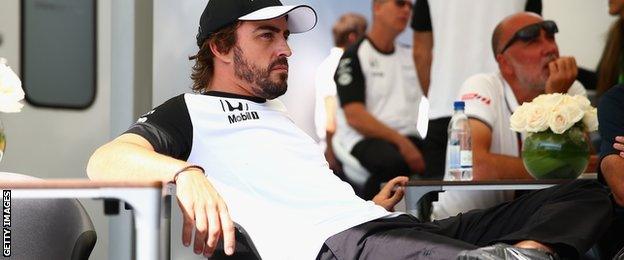
Alonso has only finished two races this season, watching the end of the other four from the paddock. (He did not race in the first round of the season as he was recovering from concussion)
This is certainly true, but the balance of the shortfall is weighted extremely heavily towards the engine. The McLaren car is actually pretty good.
The McLaren is 20km/h down on the Mercedes-powered cars on the straight and informed sources say the Honda engine is at least 75bhp down on the best, with particular problems in the hybrid part of the engine and conspicuously poor fuel consumption. It is by some measure the worst engine of the four competing in F1 this year.
Apply the time loss that can be attributed to the engine's lack of performance and it is clear that the McLaren is a very good car indeed. Not a match for the Mercedes, certainly, but in the region of a Ferrari, the second best car on the grid.
McLaren have a major upgrade to the car for the next race in Austria, and another for the subsequent British Grand Prix. If they deliver what the team believe they will, the car could be as good as a Mercedes.
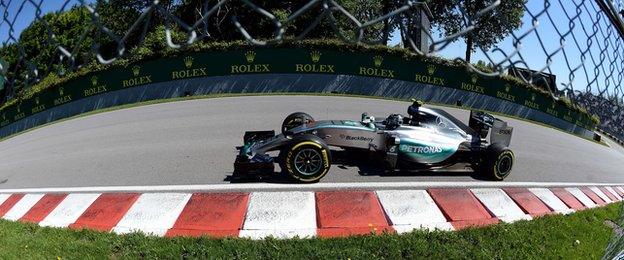
Mercedes seem to be in a class of their own, winning six out of seven races so far this season
To put this into context, Honda started developing its engine only in 2013 - three years after Mercedes started work, external - and it probably entered F1 a year too early. But enter it did, and succeed it must.
"It is easy to blame the partner but we have to be supportive," Boullier said. "We are offering support to help them accelerate this recovery time.
"To be fair they decided to join two years ago. It is not easy to be here and win. We have a mountain to climb but it looks like a very high mountain and we need to make sure we are properly equipped."
After watching Mercedes drivers Lewis Hamilton and Nico Rosberg cruising to another controlled and comfortable one-two, with the power, economy and driveability of the Mercedes engine powering five of the remaining eight points finishers, one trusts Honda will be under no illusions about the size of the task ahead.
- Published7 June 2015
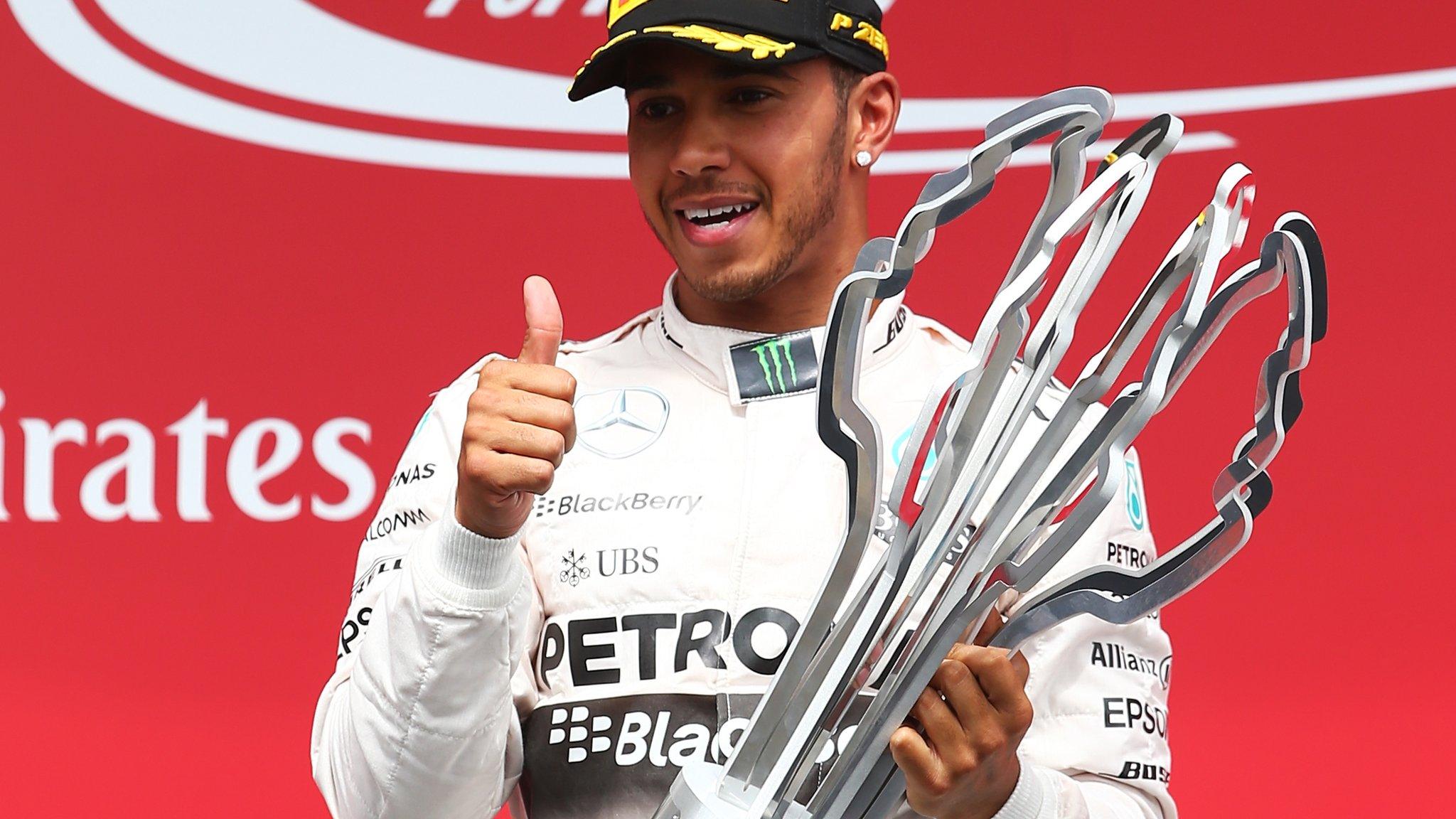
- Published1 June 2015

- Published7 June 2015
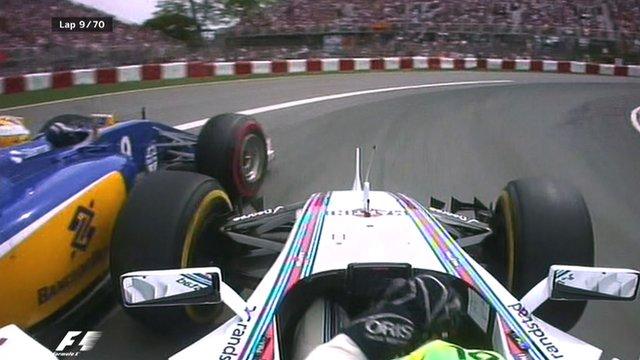
- Published18 December 2015

- Published2 November 2018

- Published26 February 2019
